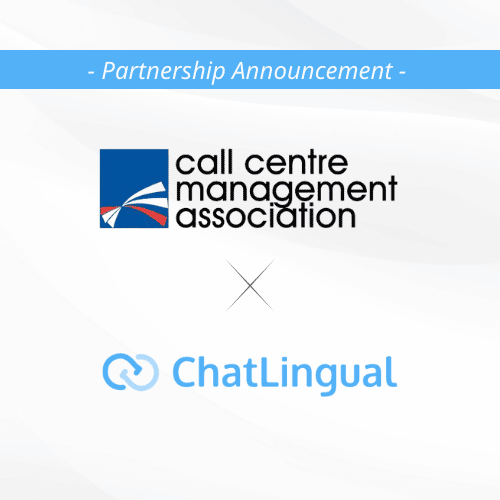Global businesses know first-hand how complex it is to serve an international customer base who represents diverse languages, cultures, and regions. There are many challenges when doing business on a worldwide scale; in this article, we’ll highlight one hurdle in particular: enabling your customer support teams to provide multilingual customer support.
It is not realistic to have a 100% bilingual (or multilingual) staff. But what if you could create an agent workspace that made it possible for your representatives to speak in the customer’s local language, while respecting the local culture, in order to create an authentic customer experience?
Why Should Companies Provide Multi-Language Customer Service?
Native-language customer service is core to the customer experience (CX).
Studies on multilingual support have shown that nearly three-fourths of consumers say that native-language services result in stronger customer satisfaction. Over half of consumers feel greater loyalty to a brand that offered native-language customer support.
The icing on the cake? There’s a $3 return for every $1 a company spends on a better customer experience.
This alone demonstrates how local-language support helps businesses to retain customers and improve customer loyalty all while improving their bottom line.

What Happens to Companies That Lack Multilingual Customer Support?
For global enterprises, a lack of multilingual customer support is similar to social disconnect. You cannot understand your customers, and your customers cannot understand you. And without this mutual understanding, there is no meaningful way to engage in conversation.
In fact, one study highlights that 40 percent of global consumers will not buy from a company that does not speak their native language.
The UK government released a report demonstrating how a lack of language skills is causing 3.5 percent of GDP loss each year, or £48 billion yearly. For businesses, this counts as a significant lost revenue opportunity.
Multilingual support has a direct, positive impact on Net Promoter Score (NPS), a measure of customer experience relationships. A lack of multilingual support can significantly impact the quality of the customer experience relationship.
Why are Companies Not Providing Multilingual Customer Support?
The biggest hurdle for companies when looking to provide multilingual customer support is finding people who speak multiple languages:
- The European Commission discovered that around 33% of EU businesses struggle to fill multilingual customer support roles due to a lack of language skills.
- Research from Harvard Business Review found that turnover for multilingual customer support departments is as high as 45 percent—double what is typically seen.
- The 2022 NICE WEM Global Survey builds on this information, where having 5,000+ multilingual support agents in a department increases turnover to 50 percent.
This shows that businesses are not only struggling to find multilingual staff, but struggling to keep them around too.
Another reason is the colossal task of employing multilingual support teams, and compensating them fairly. Being bilingual or beyond is an in-demand skill, and in most parts of the world, there is simply not enough supply. As a result, businesses hire remote overseas teams to find native speakers, leading to a geographic disconnect from the main business—not to mention the complexities of operating within another country.

Jason Stanton, Director of Sales Operations at WEX said, “I’ve increased the customer service salary 3x in just over a year to remain competitive […] We had one vacancy for Norwegian that we struggled to recruit locally. We actually recruited someone from London to work permanently remotely. ”
Businesses need to spend more on salaries to find and keep multilingual talent. Even then, some language roles are too difficult to fill unless the business is willing to facilitate remote working.
How Can Companies Start Providing Multilingual Customer Support?
The biggest challenges in providing multilingual customer support are workforce skills, employee recruitment, time zone management, and cultural awareness.
To start providing multilingual customer support, you should first consider the following:
- What Do Customers Expect? Just like with your native market, you need to research the target market and understand customer wants and needs. Which languages are the most requested? How many customers speak this language? What is the potential for return on investment per new language? Follow a data-driven approach by collecting data on the most important languages, in addition to projected ROI for each, to find the best opportunities for multilingual expansion.
- Develop Cross-Cultural Guidelines. As you expand your multilingual customer support reach, develop guidelines for each culture and country. This is similar to an instruction manual on how to speak and behave when interacting with regional speakers. Western countries commonly use first names as a greeting, but others like Japan prefer last name greetings. If you are not aware of a country’s specific cultural nuances, play it safe by using simple language and terminology so that information doesn’t get lost in translation.
- Simplify Support With Multilingual Chatbots. There is a skills shortage for multilingual customer support. One way to overcome this is with multilingual messaging via chatbot translation (i.e. real-time live chat translation). ChatLingual offers chatbot integration with IBM Watson, Microsoft Cortana, and other services, with more than 100+ supported languages and automatic hand-offs to human agents when necessary. Bots help to maintain a defined tone and persona across each language, delivering localized and always-on multilingual support experiences.
- Create a Multilingual Support Strategy. This strategy is the battle plan that defines where, what, why, and how you are deploying multilingual support. It should include a strengths-weaknesses-opportunities-threats (SWOT) analysis for each new locale, and cover the tools and processes to be implemented for enabling multilingual support. Use these best practices for designing and implementing a successful multilingual support strategy.
A Summary of Multilingual Support and Its Future in Business
Multilingual support is proven to have many benefits, including increased customer loyalty and increased customer retention. What’s more, companies realize these immediate benefits after enabling multilingual customer support:
- Becoming multilingual offers tangible benefits to customer loyalty and the customer experience (CX).
- It expands the scope of your operations to new countries, increasing the number of customers available to sell your products and services to.
- If you provide multilingual support, and your competitors do not, this is a competitive advantage or unique selling point (USP).
- It builds a deeper emotional connection with customers: multilingual support cultivates emotions such as being a respectful, dependable, empathetic, and relatable company to purchase from or partner with.
ChatLingual believes real-time customer support chat translation will be the new norm well within the next decade.
Even then, many businesses are missing out on sales opportunities, as 40 percent of consumers refuse to purchase goods and services in a non-native language.
Part of why is a lack of multilingual workforce skills, and low employee retention within contact centers as businesses are struggling to find and keep their multilingual talent.
Thankfully, translation technology can fill the gaps in the multilingual workforce void. ChatLingual has a targeted solution in the form of multilingual agent desktops and chatbots in different languages. It provides a better, scalable employee experience (EX) for support agents, with the help of always-on AI chatbot support to lessen workloads and reduce support costs. As a result, you can chat with non-native speakers with 97 percent comprehensibility in 100+ languages to deliver seamless multilingual customer experiences (CX).
Leverage the benefits of multilingual support and contact us today to start building your next customer support experience.



